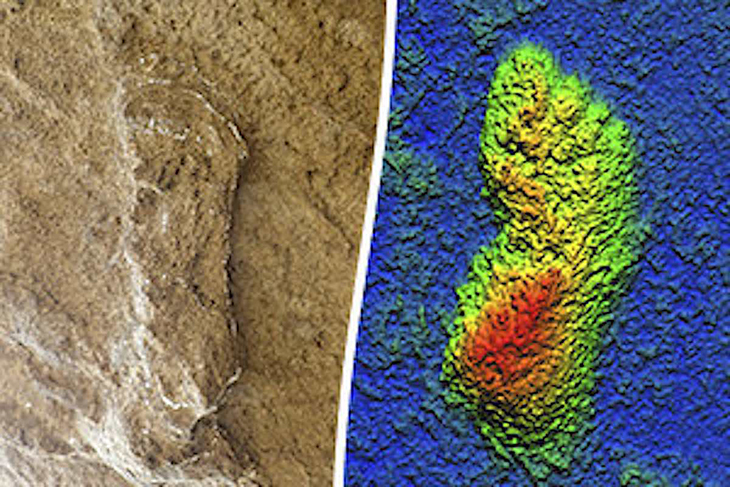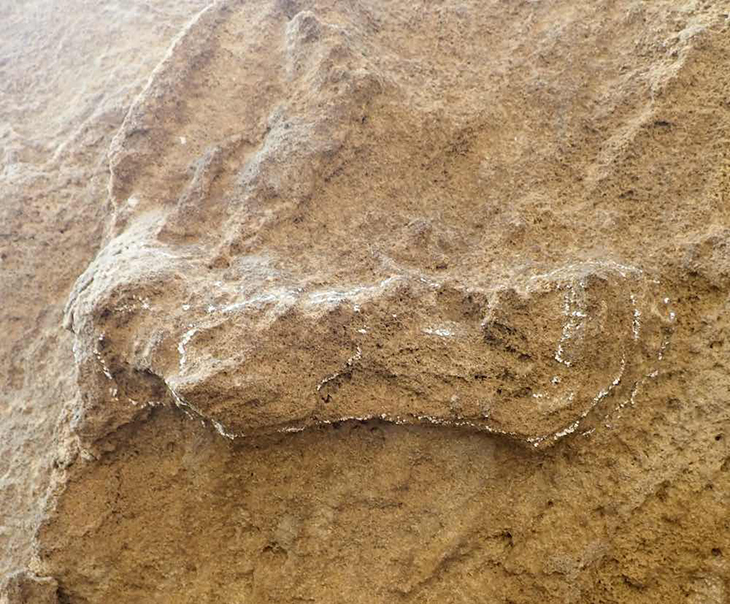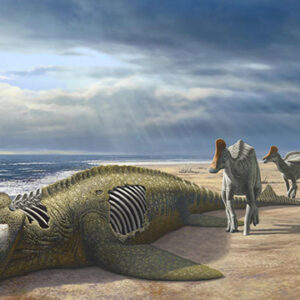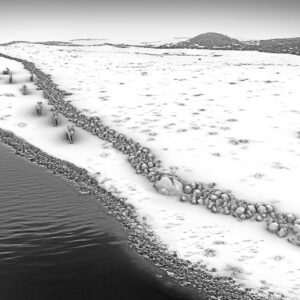
In a remarkable archaeological find, scientists have uncovered a 153,000-year-old footprint in South Africa, which could potentially be the oldest ever made by our species, Homo sapiens.
While previous footprints from the Homo genus have been found in Spain, determining the exact species to which they belonged has been challenging, as they pre-date the earliest evidence of Neanderthals in Europe.
The discovery of the track in the Garden Route National Park, located west of the Cape Coast town of Knysna, was a significant breakthrough for researchers working in Africa. The footprint has been confirmed to belong to Homo sapiens, and its age surpasses that of the previously recognized oldest tracks in Nahoon and Langebaan by an impressive 25,000 years.
Out of the 13 known sites bearing Homo genus footprints, 4 are from East Africa, and 9 are from South Africa. Additional 10 ichnosites are scattered across the world, including locations in the UK and Arabian Peninsula.
Charles Helm, a Research Associate at Nelson Mandela University, and Andrew Carr, a Senior Lecturer at the University of Leicester, who together published a paper on their findings in the journal Ichnos, explained, “Just over two decades ago, as the new millennium began, it seemed that tracks left by our ancient human ancestors dating back more than about 50,000 years were excessively rare.”
“In 2023 the situation is very different. It appears that people were not looking hard enough or were not looking in the right places. Today the African tally for dated hominin ichnosites (a term that includes both tracks and other traces) older than 50,000 years stands at 14,” they add.
They also share that the count includes ‘4 from East Africa and 9 from South Africa.’ Meanwhile, there are another 10 ichnosites that are spread throughout the world, which can be found in particular places in the UK and Arabian Peninsula.
Dr. Helm says, “The footprints are ‘natural casts’, i.e. they are from the layer of sand that filled the footprints in.”
“The South African hominin track sites are globally unusual in that this is a common mode of preservation. It means that, counterintuitively, we look on cave ceilings and rock overhangs for such footprints,” he adds.

The South African sites, particularly those along the Cape Coast attributed to Homo sapiens, tend to have exposed tracks, evident in rocks known as aeolianites, which are solidified remnants of ancient dunes.
Due to their exposed nature and the coarse texture of dune sand, these sites are often not as well preserved as their counterparts in East Africa. As a result, excavations are usually not pursued at these locations.
Dr. Helm also shares, “They are also vulnerable to erosion, so we often have to work fast to record and analyze them before they are destroyed by the ocean and the wind. A key challenge when studying the palaeo-record—trackways, fossils, or any other kind of ancient sediment, is determining how old the materials are.”
To determine the age of the Cape Coast aeolianites, scientists often rely on a dating method known as optically stimulated luminescence. This technique measures how long a grain of sand has been exposed to sunlight, providing valuable information about the age of the sediment and the footprints that have been preserved within.
“Given how the tracks in this study were formed—impressions made on wet sand, followed by burial with new blowing sand—it is a good method as we can be reasonably confident that the dating “clock” started at about the same time the trackway was created,” the researchers write.
The discovery of this ancient Homo sapiens footprint offers significant insights into the history of our species and their early movements. It sheds light on our ancestors’ presence in South Africa over 150,000 years ago and serves as a critical piece in the puzzle of human evolution. As researchers continue their explorations, it is likely that further revelations about our ancient past will come to light.
What are your thoughts? Please comment below and share this news!
True Activist / Report a typo


